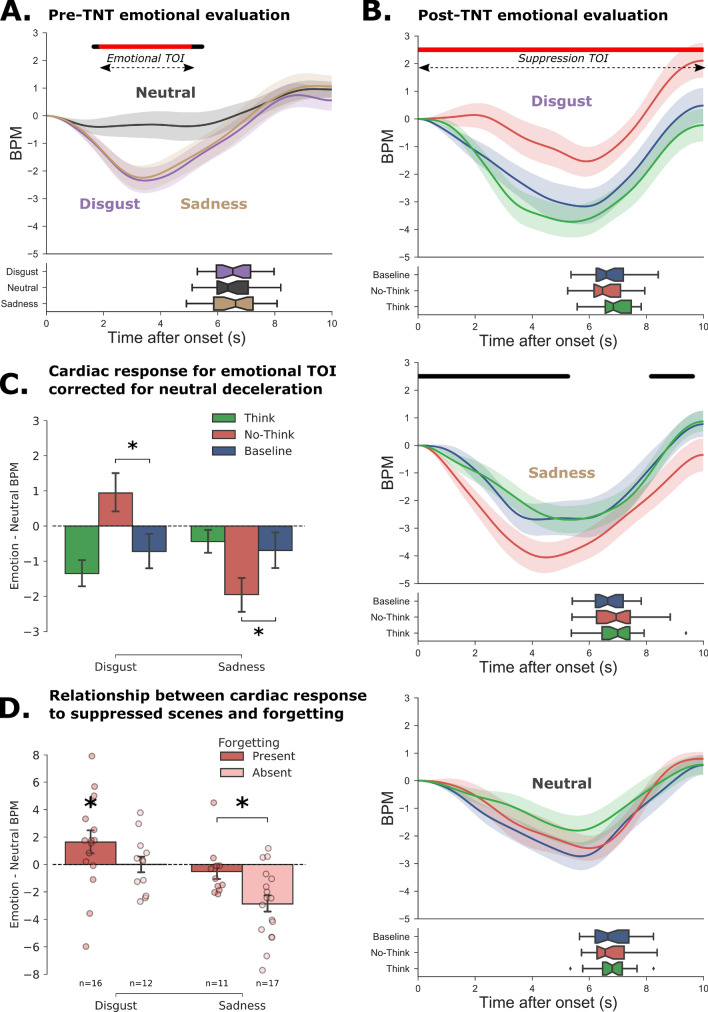Figure 3.
Cardiac response to stimuli before and after the TNT task (Study 1). (A) Cardiac response following the initial presentation of the images before the TNT task. The curves represent changes in the number of heartbeats per minute (bpm), taking image onset as the starting point (i.e. 0 sec.). In the lower panel, the boxplots represent the distribution of response times for the valence ratings. (B) Cardiac response after the TNT task for disgusting (top panel), sad (middle panel), and neutral (bottom panel) images. For each emotion, the Think (green), No-Think (red) and baseline (blue) items are shown separately. We observed a significantly weaker heart rate deceleration for disgusting No-Think items compared with baseline items, while a stronger deceleration was reported for sad pictures in the suppression condition. In Panels A and B, the black line indicates the significant difference between neutral and emotional (i.e. disgust + sadness) evoked responses, while the red line indicates the remaining significant points after false discovery rate (FDR) correction. (C) To control for the stronger deceleration observed for neutral items in the post-TNT evaluation, we computed the difference between the mean bpm for emotional and neutral pictures in the significant emotional time window extracted in the pre-TNT assessment. The reduced or increased deceleration observed for No-Think items was still present for disgusting and sad pictures, even after controlling for neutral deceleration. This suggests that the modulation of the cardiac response following memory suppression could not be attributed to trivial shifts in low-level attention processes. (D) To explain the contrasting modulation patterns observed for disgust and sadness, we split participants into two groups according to whether they could suppress emotional scenes from their memory. Participants who were better at suppressing disgusting scenes also showed a weaker heart rate deceleration when they were subsequently exposed to these scenes. By contrast, the stronger heart rate deceleration following the suppression of sad scenes was mostly observed in participants who could not suppress them from their memory.

